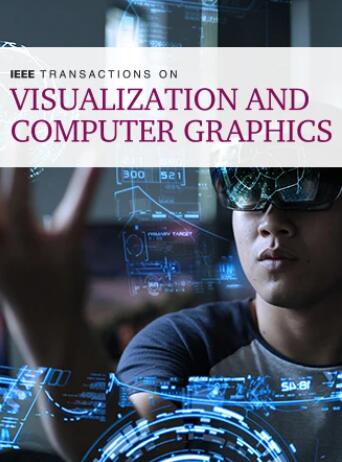IntrinsicNGP:基于内在坐标的人类NeRF哈希编码
IF 6.5
1区 计算机科学
Q1 COMPUTER SCIENCE, SOFTWARE ENGINEERING
IEEE Transactions on Visualization and Computer Graphics
Pub Date : 2023-02-28
DOI:10.48550/arXiv.2302.14683
引用次数: 4
摘要
近年来,人们提出了许多利用神经辐射场进行人类表演者新视角合成的研究。然而,这些方法大多需要数小时的训练,使它们难以实际使用。为了解决这个具有挑战性的问题,我们提出了IntrinsicNGP,它可以从零开始训练,并在几分钟内通过人类表演者的视频获得高保真的结果。为了实现这一目标,我们在instant-NGP的哈希编码模块中引入了一个连续的、可优化的内在坐标,而不是原来的显式欧几里德坐标。利用这种新颖的内在坐标,IntrinsicNGP可以借助代理几何形状聚合动态对象的帧间信息。此外,使用给定的粗糙几何形状训练的结果可以进一步细化基于内在坐标的可优化偏移场。在多个数据集上的大量实验结果证明了IntrinsicNGP的有效性和高效性。我们还说明了我们的方法编辑重建主题的形状的能力。本文章由计算机程序翻译,如有差异,请以英文原文为准。
IntrinsicNGP: Intrinsic Coordinate based Hash Encoding for Human NeRF
Recently, many works have been proposed to utilize the neural radiance field for novel view synthesis of human performers. However, most of these methods require hours of training, making them difficult for practical use. To address this challenging problem, we propose IntrinsicNGP, which can train from scratch and achieve high-fidelity results in few minutes with videos of a human performer. To achieve this target, we introduce a continuous and optimizable intrinsic coordinate rather than the original explicit Euclidean coordinate in the hash encoding module of instant-NGP. With this novel intrinsic coordinate, IntrinsicNGP can aggregate inter-frame information for dynamic objects with the help of proxy geometry shapes. Moreover, the results trained with the given rough geometry shapes can be further refined with an optimizable offset field based on the intrinsic coordinate. Extensive experimental results on several datasets demonstrate the effectiveness and efficiency of IntrinsicNGP. We also illustrate our approach's ability to edit the shape of reconstructed subjects.
求助全文
通过发布文献求助,成功后即可免费获取论文全文。
去求助
来源期刊

IEEE Transactions on Visualization and Computer Graphics
工程技术-计算机:软件工程
CiteScore
10.40
自引率
19.20%
发文量
946
审稿时长
4.5 months
期刊介绍:
TVCG is a scholarly, archival journal published monthly. Its Editorial Board strives to publish papers that present important research results and state-of-the-art seminal papers in computer graphics, visualization, and virtual reality. Specific topics include, but are not limited to: rendering technologies; geometric modeling and processing; shape analysis; graphics hardware; animation and simulation; perception, interaction and user interfaces; haptics; computational photography; high-dynamic range imaging and display; user studies and evaluation; biomedical visualization; volume visualization and graphics; visual analytics for machine learning; topology-based visualization; visual programming and software visualization; visualization in data science; virtual reality, augmented reality and mixed reality; advanced display technology, (e.g., 3D, immersive and multi-modal displays); applications of computer graphics and visualization.
 求助内容:
求助内容: 应助结果提醒方式:
应助结果提醒方式:


